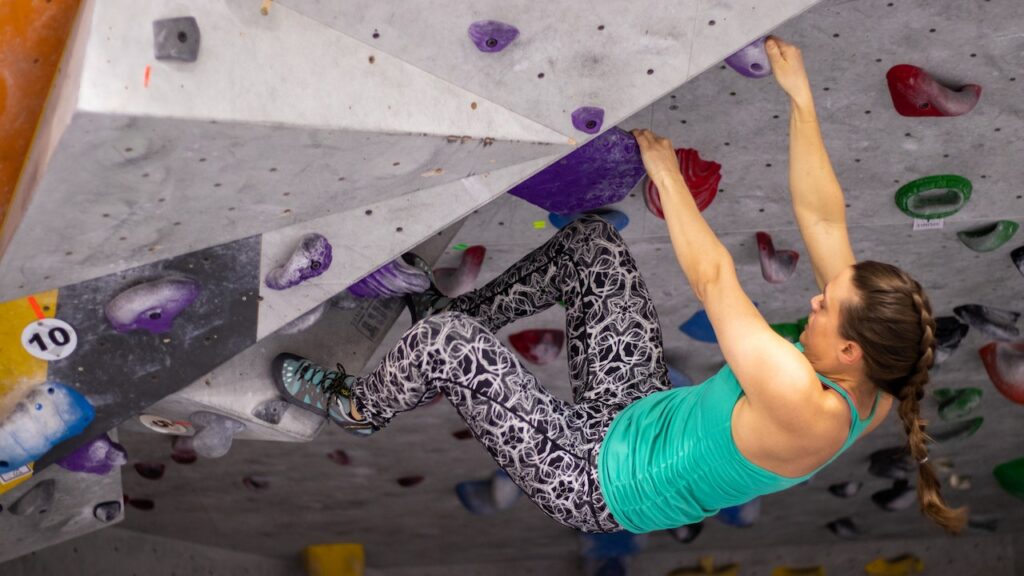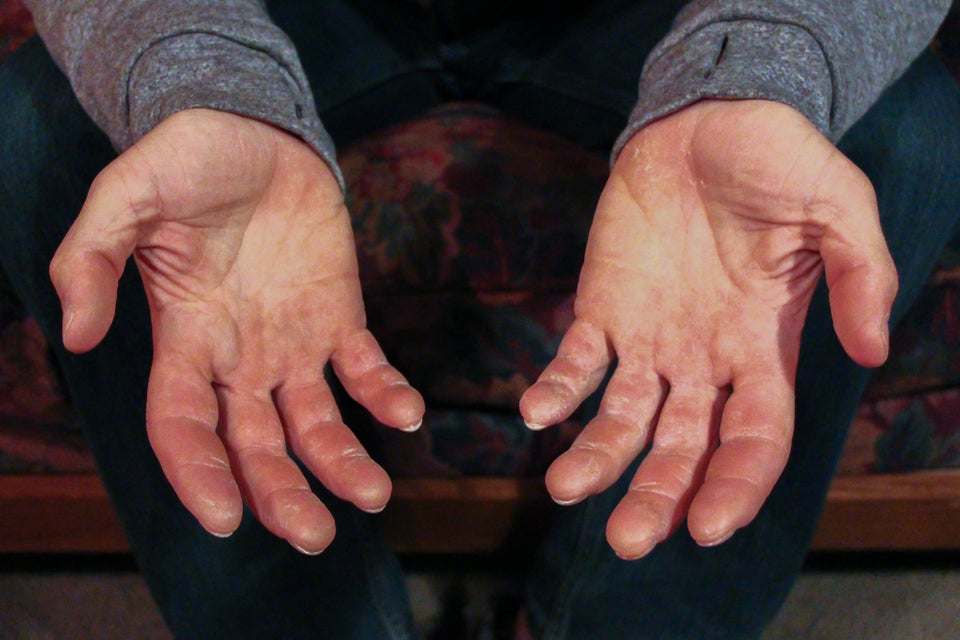If you’re relatively new to the climbing world or in the process of joining, you might be thinking about your finger strength. And the amount of work required to build it properly.
Proper finger strength and technique are undoubtedly essential requirements when rock climbing or bouldering.
Building your strength is good, but you can get injured if you do it the wrong way, and some of those injuries might not be temporary. Remember that the end goal is to stay safe and have the best time while climbing.
You’ll find many “gurus” on the Internet who’ll tell you that it’ll take X amount of time to develop finger strength. But it depends on your regime – how much you are resting, how many times you climb per week, and on your build. But there are ways to accelerate the process.
Lesson 1: How to strengthen your fingers?
Building finger strength takes time; it’s not an overnight process – keep this in mind. With the warning said and done, let’s see what you can do to help strengthen your fingers.
To build and improve finger strength for all purposes climbing you should,
1. Climb regularly and maintain a routine.
2. Practice hangboarding.
3. Take proper rest and warm up to avoid injuries.
4. Exercise your fingers properly to build the necessary muscles.
I. Climb, Climb & Keep Climbing!
I’m sure everyone has already told you that the best way to build finger strength for rock climbing and bouldering is to go climbing, and they’re right. The amount of finger strength you’ll build and the technique you’ll polish in a one-hour climbing session will be twice as effective than a one-hour gym session.
Climbing is an experience that you can’t virtually create in a gym room, but that’s the good part. Unlike many other sports, you get to build your strength while doing the activity you like instead of exercising in a gym.
II. Hangboarding
Hangboarding is the closest you can get to mimic the climbing and bouldering experience in an exercise. There are various types of hangboards that you’ll find in your local gym, each used to build strength in a specific way.
In hangboarding, you lift your body and hang mid-air on a wooden board with no support except your fingertips. You can do this in three different hand positions: open-hand, half-crimp, and full-crimp.
I recommend you consult with your local gym trainer to decide which position and board to start practicing with.
III. Resting (& Warm-Up)
This is a common lesson that is applicable in almost all kinds of sports and training. Resting is the most basic rule of strength-building because your muscles go through microscopic wear and tear when you exercise. This requires your body to build those muscles back up using lipids and proteins.
According to BuiltLean, muscle growth occurs whenever the rate of muscle protein synthesis is more than the rate of muscle protein breakdown. This process happens while you’re resting.
Warm-up is essential to preventing short-term injuries and long-term injuries. Always remember that a proper warm-up can save you a life’s worth of pain.
IV. Some Exercises You Can Do
While it’s true that nothing builds finger strength for climbing better than climbing itself, you still need to focus on your other muscles. As I explained in the guide earlier, you can’t ignore one set of muscles entirely because you’re working on another set. This can cause muscle imbalance in your body which can lead to various injuries. Here are some of the training exercises you can do:
- Use Resistance Bands: Resistance bands are very versatile and can be used in numerous exercises. Here, you can use resistance bands for stretching your fingers.
- Thumbs Opposition: It is a technical term for a child’s ability to move his thumbs and fingers to be able to touch each other. This can be a great warm-up exercise. All you need to do is hold out your hands, press your thumb against the little finger hard for three to five seconds and then move to the adjacent finger. Do this set three to four times.
- Stress Balls: You can use a stress ball or a squeeze ball to help strengthen your fingers. All you need to do is squeeze the ball as hard as possible and hold out the pressure for about fifteen to twenty seconds. Do it again after a ten seconds rest and repeat the process four to five times.
There are various other exercises that you can do to strengthen your fingers, such as pen rolls but don’t forget to rest, consult your trainer before doing anything, and don’t go overboard.
Lesson 2: Is climbing bad for your fingers?
Climbing is not bad for your fingers if you do it correctly. While rock climbing and bouldering can put a tremendous amount of pressure on your fingers and lead to various minor and major injuries, it largely depends on your training, technique, and your awareness about your body’s limits.
Various studies show that climbing extensively can lead to a broader gap in bones between the fingers, but that’s not a severe issue. Another myth among the rookies and non-climbers is that climbings can cause Osteoarthritis, which is not valid.
According to WebMD, Osteoarthritis (OA) is caused by aging joints, injury, and obesity. It is a disease of “wear and tear.”
In fact, NCBI conducted a study on two groups (climbers and non-climbers) to study such effects. They found that even though climbers had increased bone mass and strength due to the loads, climbers had fewer symptoms of Osteoarthritis than non-climbers.
Here’s the study by The National Center for Biotechnology Information, US, on the factors influencing osteological changes in the hands and fingers of climbers.
Lesson 3: How long does it take to build finger strength?
All good things take time.
Generally speaking, it takes 6 months to 2 years for climbers to build and improve their finger strength. It depends on your current proficiency and climbing frequency. Climbing fingers aren’t easily achievable by taking one session every week for several months.
Soon you’ll notice that you have built rock-solid forearms, biceps, back, and shoulders, but your finger strength has not improved much. Don’t panic; there’s a scientific reason for it. Your back, shoulders, etc., have muscles that grow when exercised correctly, but your fingers are made of tendons that don’t grow as fast as muscles do.
You can try various aids such as exercising with heavy loads for fewer repetitions instead of lighter loads with more sets, but you’ll need to learn to give things time. It’s not an overnight process. Another thing to remember is how to set reasonable goals for your finger strength.
Don’t try to achieve a pro climber’s regimen right from the get-go. There is no test or scale factor to measure your strength accurately. So, practice smartly and in proportion to your current routes.

Lesson 4: Finger Strength vs. Climbing Technique: What should you polish more?
While you’re out there climbing and exercising every week, you might want to pay some attention to your climbing technique as well. Minor injuries such as hairline fractures that eventually grow into significant issues after some time are more common than you’d expect.
You can have a fantastic record of hanging on a board with nothing but your fingers, but if your technique is sloppy, things can go real bad real fast.
If you can achieve enough finger strength to hang on a board for 5 to 10 seconds with your fingers but don’t know how to deal with crimps and dynos, would you be able to clear advanced routes in V grades? The answer is no.
You won’t be able to do that. And, if you are new to this sport, you’ll be starting with bouldering instead of rock climbing. So, you need to focus on your grip strength instead of finger strength.

Lesson 5: Does grip strength matter? How long does it take to build grip?
As I mentioned in the previous lesson, good finger strength and technique will help you with advanced holds like crimps. However, you won’t face these holds as a beginner on your bouldering routes. What you need is grip strength.
Maintaining your grip strength in proportion to your finger strength is also necessary because strengthening just one set of muscles can be counterproductive.
Imagine if you had a big forearm and bicep on your right hand, a skinny left hand. Wouldn’t that make your daily tasks a lot harder?
It’s the same when it comes to honing your body – if you focus too much on promoting one set of muscles, the others might be underdeveloped, which can lead to various injuries.
You can try general exercises such as wrist curls, reverse wrist curls, crushing, and wrist rotation to help strengthen your grip for bouldering and climbing.
Lesson 6: Fat fingers are a real deal

Rock climbing and bouldering can technically fatten your fingers. While it largely depends on your training intensity and the number of hours spent climbing, tendons can grow more significant to almost twice their original size.
According to a study done by The Department of Trauma and Orthopedic Surgery, young adults, finger fattening, and other injuries are pretty common in young climbers who’re less likely to show restraint and listen to advice.
Unless you’re planning to go on a long and adrenaline-driven training regime without moderation, you’re good to go.
You’ve got everything you need to know about finger fattening due to climbing and other injuries.

